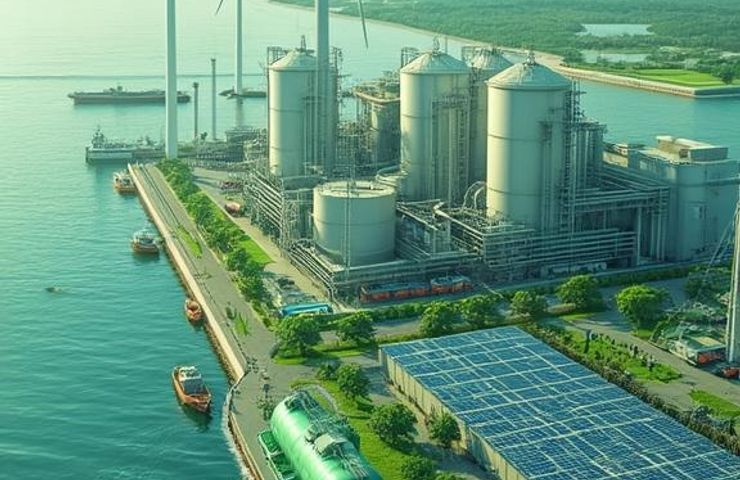
Green Ammonia Revolution: ACME Cleantech Scores Two Wins in SECI SIGHT Auction
August 20, 2025Imagine giving fertilizer a green makeover that slashes carbon both ways and trims down import bills in one fell swoop. Well, buckle up, because ACME Cleantech just pulled it off. In the seventh round of the SECI SIGHT green ammonia auction, they scored not one but two contracts.
They’re locked in to deliver 50,000 tonnes a year of pure Green Ammonia to Coromandel International in Andhra Pradesh—and get this—for under ₹52 per kilogram. That’s a real wake-up call for the fertilizer industry!
What This Means
Up until now, India’s fertilizer giants have been hooked on ammonia from natural gas, hauling in imported LNG and belching CO2. That’s bad for the planet and a headache for energy security. Switching to Green Ammonia means India can:
- Slash carbon emissions by up to 80% compared to grey ammonia.
- Reduce import bills by cutting LNG dependence and locking in stable prices.
- Boost renewable growth by giving electrolyzers and wind/solar projects a solid revenue anchor.
It’s a huge leap for Fertilizer Decarbonization.
And here’s the kicker: Coromandel International, part of the Murugappa Group, is securing this rock-bottom-priced green feedstock. That’s a win for farmers, energy security, and India’s climate targets. Plus, it’s just the beginning—SECI has at least 13 more tenders lined up, targeting over 700,000 TPA of Green Ammonia!
Real-World Application
This isn’t theoretical. The SECI Auction under the Ministry of New and Renewable Energy bundles offtake agreements to lock in demand. By pooling volumes, SECI drives prices down—hence that under-₹52/kg milestone.
Andhra Pradesh is the perfect launchpad. With ports in Kakinada and Visakhapatnam, it’s primed for both imports and exports. Now, those green molecules are powering fertilizer lines across millions of hectares.
ACME Cleantech’s back-to-back wins—first with Paradeep Phosphates in Odisha, now with Coromandel—show they’re not just signing contracts; they’re building the electrolysis and storage facilities to bring these deals to life.
Strategic Angle
This milestone slots neatly into a government-backed game plan. The National Green Hydrogen Mission is shooting for 5 million tonnes of green hydrogen per year by 2030, and the SECI SIGHT program is its procurement engine. Here’s how it all fits:
- Policy support: Fiscal incentives, inter-state transmission waivers for renewables, and electrolyzer subsidies.
- Bundled auctions: SECI aggregates volumes, lures more bidders, and pushes prices down.
- Industry commitment: Big players like Coromandel International and Paradeep Phosphates step in as anchor off-takers.
This combo of policy, guaranteed demand, and private-sector muscle creates a virtuous cycle—more scale, lower costs, more players, and even more scale. In Andhra Pradesh, you can already see it: engineering contracts for electrolyzer plants, port upgrades for ammonia tankers, and thousands of new jobs.
Zooming Out
The world’s watching India’s playbook. Europe is testing auctions in Spain and Portugal. The Gulf is building export terminals. But India’s high-volume, demand-aggregating approach could become the global gold standard—especially after hitting sub-₹52/kg at scale. That’s proof investors can’t ignore.
And it doesn’t stop at fertilizers. Green Ammonia could also power:
- Maritime fuel: Zero-carbon bunker fuel for ships.
- Grid storage: Ammonia as a hydrogen carrier for long-duration energy storage.
- Export revenues: Positioning India as a leading Green Ammonia supplier worldwide.
If costs keep falling, this could reshape energy geopolitics—shifting the balance from fossil fuel exporters to nations rich in renewables.
This isn’t a green fad. It’s a seismic shift in how we make and use ammonia. ACME Cleantech’s double win in the SECI Auction proves that Green Ammonia is cost-competitive, scalable, and ready for prime time. As India’s fertilizer giants pivot from grey feedstock to green, the dominoes start falling: cleaner agriculture, stronger energy security, and a turbocharged renewable industry. Ready to watch this revolution unfold? The future of fertilizers—and beyond—is firmly green.



 With over 15 years of reporting hydrogen news, we are your premier source for the latest updates and insights in hydrogen and renewable energy.
With over 15 years of reporting hydrogen news, we are your premier source for the latest updates and insights in hydrogen and renewable energy.